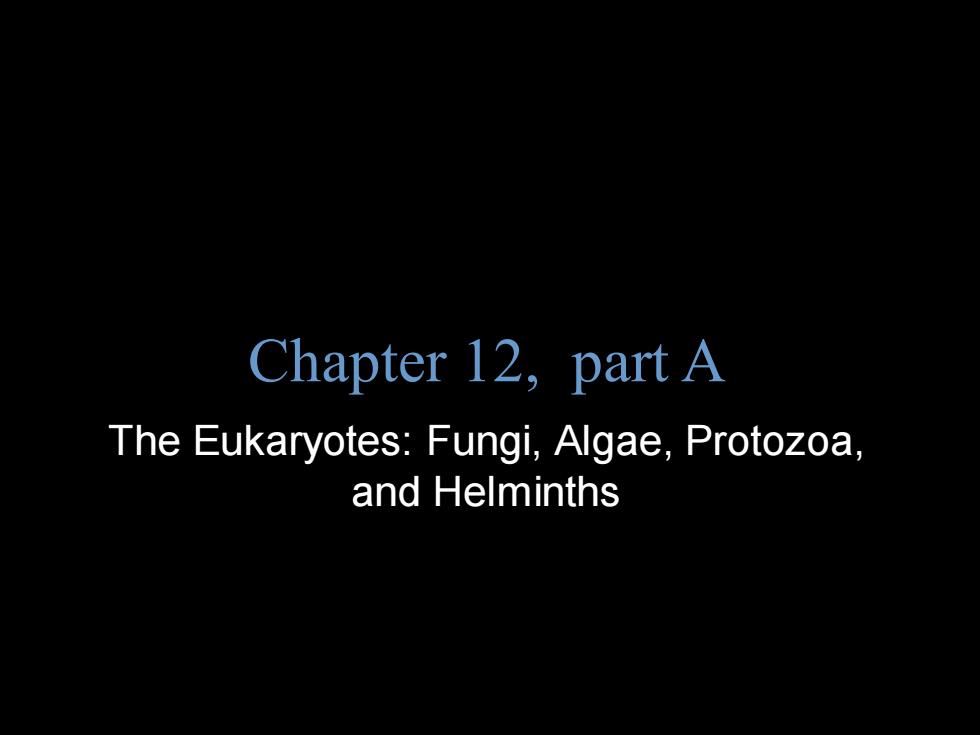
Chapter 12,part A The Eukaryotes:Fungi,Algae,Protozoa, and Helminths
Copyright © 2004 Pearson Education, Inc., publishing as Benjamin Cummings B.E Pruitt & Jane J. Stein Chapter 12, part A The Eukaryotes: Fungi, Algae, Protozoa, and Helminths
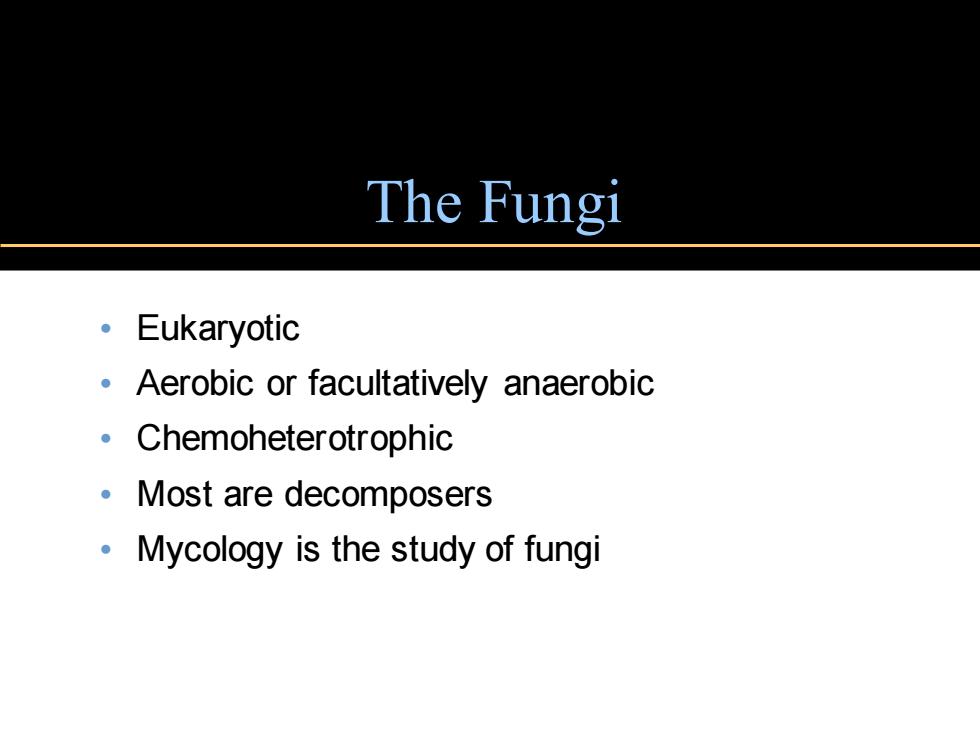
The Fungi 。Eukaryotic Aerobic or facultatively anaerobic ·Chemoheterotrophic ·Most are decomposers Mycology is the study of fungi
The Fungi • Eukaryotic • Aerobic or facultatively anaerobic • Chemoheterotrophic • Most are decomposers • Mycology is the study of fungi
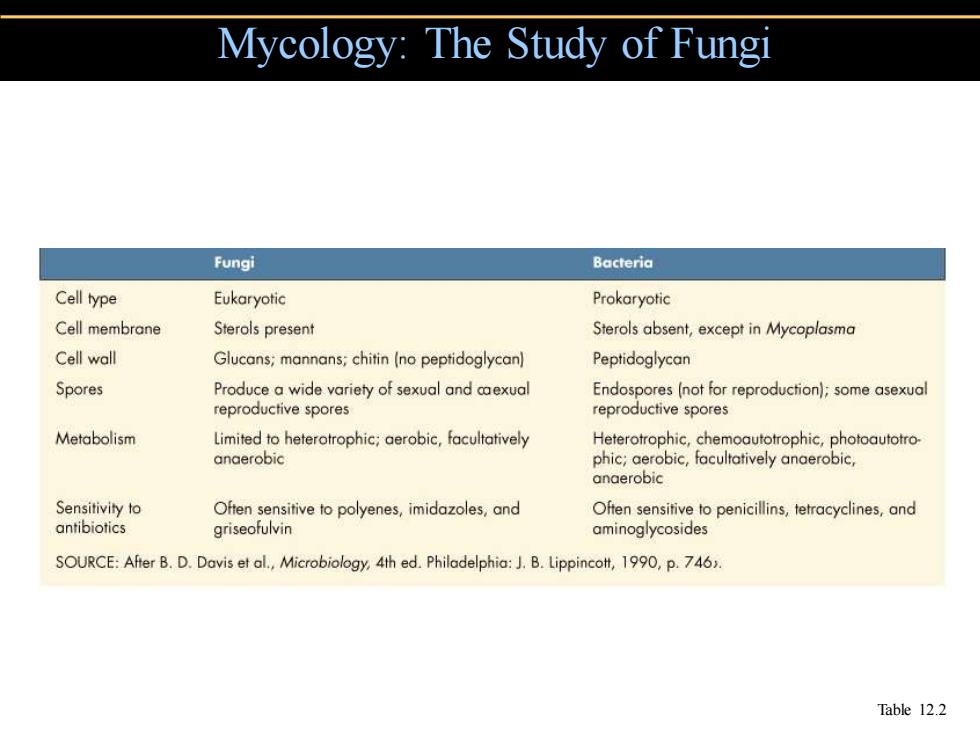
Mycology:The Study of Fungi Fungi Bacteria Cell type Eukaryotic Prokaryotic Cell membrane Sterols present Sterols absent,except in Mycoplasma Cell wall Glucans;mannans;chitin(no peptidoglycan) Peptidoglycan Spores Produce a wide variety of sexual and caexual Endospores (not for reproduction);some asexual reproductive spores reproductive spores Metabolism Limited to heterotrophic;aerobic,facultatively Heterotrophic,chemoautotrophic,photoautotro- anaerobic phic;aerobic,facultatively anaerobic, anaerobic Sensitivity to Often sensitive to polyenes,imidazoles,and Often sensitive to penicillins,tetracyclines,and antibiotics griseofulvin aminoglycosides SOURCE:After B.D.Davis et al.,Microbiology,4th ed.Philadelphia:J.B.Lippincolt,1990,p.7463. Table 12.2
Mycology: The Study of Fungi Table 12.2
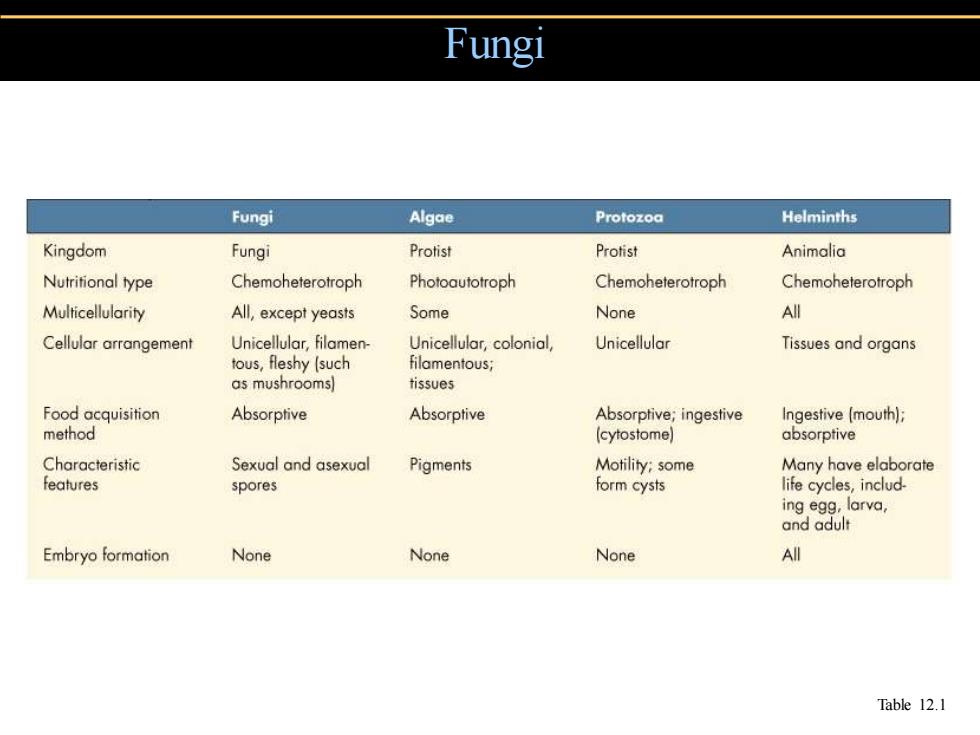
Fungi Fungi Algae Protozoa Helminths Kingdom Fungi Protist Protist Animalia Nutritional type Chemoheterotroph Photoautotroph Chemoheterotroph Chemoheterotroph Multicellularity All,except yeasts Some None All Cellular arrangement Unicellular,filamen- Unicellular,colonial, Unicellular Tissues and organs tous,fleshy (such filamentous; as mushrooms) tissues Food acquisition Absorptive Absorptive Absorptive;ingestive Ingestive (mouth); method (cytostome) absorptive Characteristic Sexual and asexual Pigments Motility;some Many have elaborate features spores form cysts life cycles,includ- ing egg,larva, and adult Embryo formation None None None All Table 12.1
Fungi Table 12.1
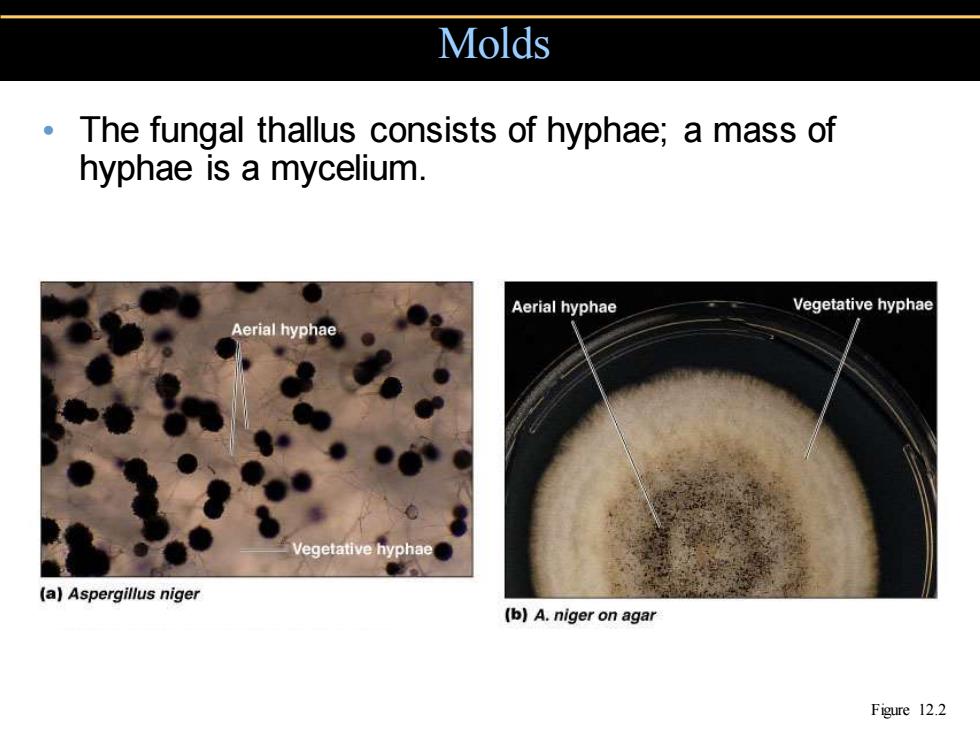
Molds The fungal thallus consists of hyphae;a mass of hyphae is a mycelium. Aerial hyphae Vegetative hyphae Aerial hyphae Vegetative hyphae (a)Aspergillus niger (b)A.niger on agar Figure 12.2
• The fungal thallus consists of hyphae; a mass of hyphae is a mycelium. Molds Figure 12.2

Yeasts Unicellular fungi Fission yeasts divide symmetrically Budding yeasts divide asymmetrically Parent cell Figure 12.3
• Unicellular fungi • Fission yeasts divide symmetrically • Budding yeasts divide asymmetrically Yeasts Figure 12.3
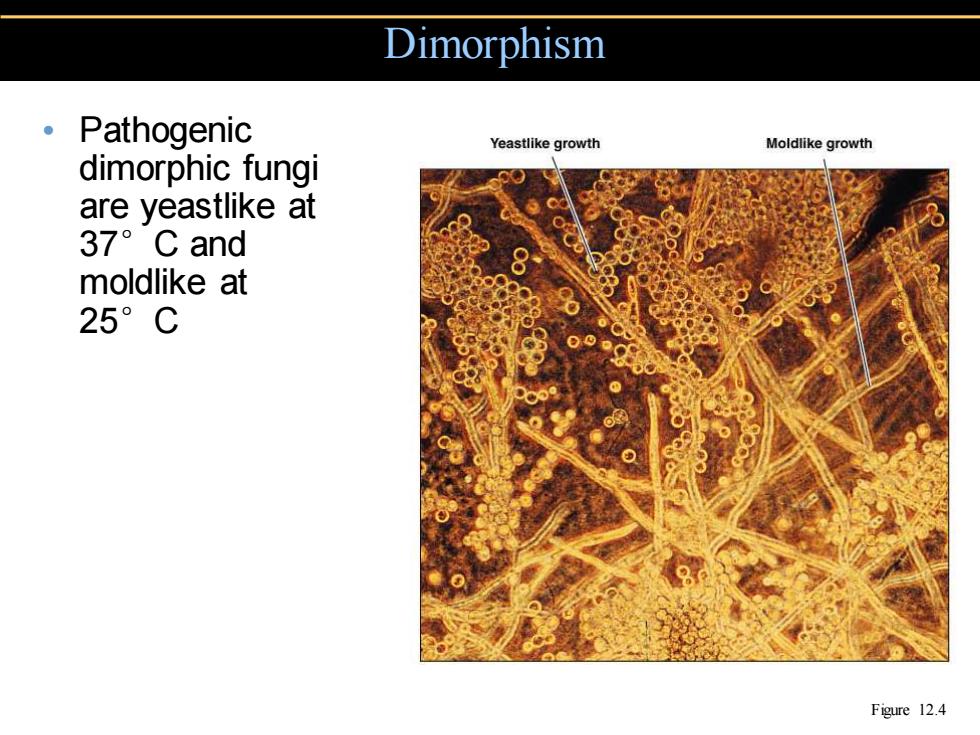
Dimorphism Pathogenic Yeastlike growth Moldlike growth dimorphic fungi are yeastlike at 37°Cand moldlike at 25°C Figure 12.4
• Pathogenic dimorphic fungi are yeastlike at 37°C and moldlike at 25°C Dimorphism Figure 12.4

Fungal Life Cycle Conidia Ascospore Conidiophore Conidia Ascospore ⑧Ascus opens germinates Conidiophore ①Hypha produces to release to produce conidiophore ascospores 88 hyphae ⑦Meiosis then mitosis Asexual reproduction Sexual reproduction ②Conidia are released Vegetative from conidiophore mycelium grows 6Karyogamy Plasmogamy ③Conidium germinates to produce hyphae Figure 12.7
Fungal Life Cycle Figure 12.7

Fungal Diseases (mycoses 。Systemic mycoses Deep within body Subcutaneous mycoses Beneath the skin ·Cutaneous mycoses Affect hair,skin,nails 。Superficial mycoses Localized,e.g.,hair shafts Opportunistic mycoses Caused by normal microbiota or fungi that are normally
• Systemic mycoses Deep within body • Subcutaneous mycoses Beneath the skin • Cutaneous mycoses Affect hair, skin, nails • Superficial mycoses Localized, e.g., hair shafts • Opportunistic mycoses Caused by normal microbiota or fungi that are normally Fungal Diseases (mycoses)

Asexual spores Cell wall- Pore Nuclei 。Sporangiosphore Septum 。Conidiospore (a)Septate hypha (b)Coenocytic hypha 。Arthrospore ·Blastoconidium 。Chlamydospore (c)Growth of a hypha from a spore Figure 12.1
• Sporangiosphore • Conidiospore • Arthrospore • Blastoconidium • Chlamydospore Asexual spores Figure 12.1